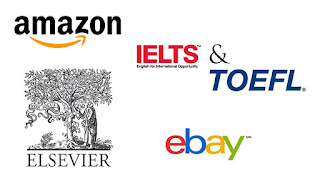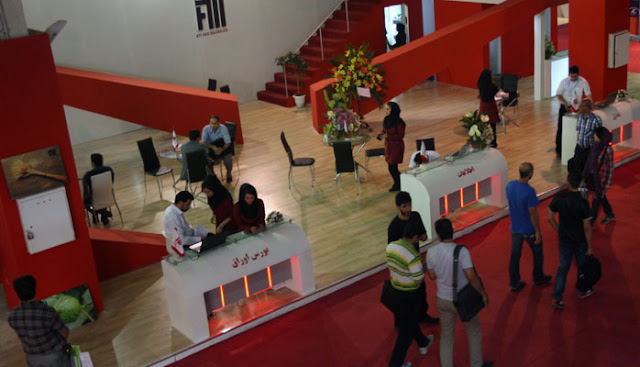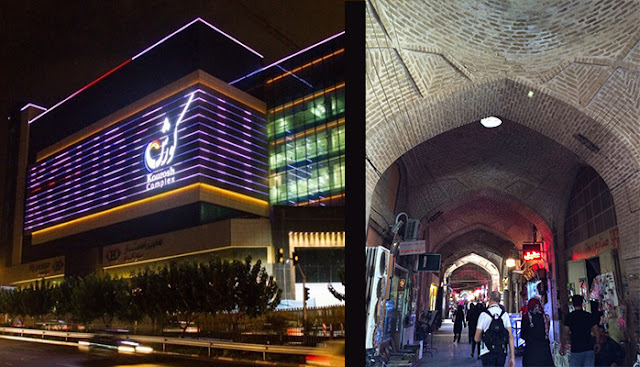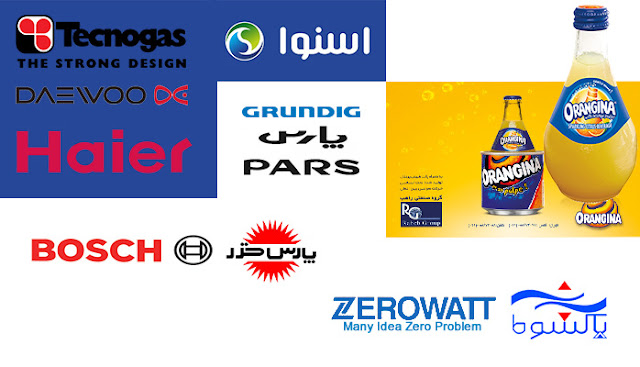Iran Market Entry Strategies
In order to map out the entering path to Iran Market a trade-off analysis among different strategies should be deployed to balance risk, control, resource based or market strategies that are triggered mainly for managerial decisions. Therefore, by keeping the philosophical articulation aside and turning to a pragmatic approach, each strategy can be depicted by considering its pros and cons in to account.
Given the fact that prior to any market entry some steps are always taken for granted, namely "Market defining", "Market Analysis", "Internal capabilities assessment", and "priorities and market selection", this article is intended to elaborate more on "Iran Market Entry Strategies" which is the final step but is merely spoken about.
1- DIRECT EXPORT
Goal: To deliver goods or services directly on purchase orders which avoid any middleman to earn higher return on sales, or even assist to set lower prices for a more competitive position.
Online Sales
IT services, software, games, electronic books or articles, or even online sales through well-known online shops like Amazon and eBay. This type of services are not pervasive due to limited access of Iranian customers to credit card |
|
| Pros | Cons |
- New generation in Iran are get used to buy from domestic online shops
- 35% of Iranian have access to online shops
- The total amount of online sales in Iran ,reached to 17 billion USD in 2014
- Internet penetration rate in Iran is 70%
|
- Due to sanction just a few number of people have access to credit card
- There is legal office or agency of international online shops in Iran , so always there is a kind of fear to put order on them
- Risk of currency exchange rate is still a matter for whom plans to sell in foreign currencies to Iran
|
Tenders
Services and commodities in different categories notably including Oil, Gas and Petrochemical, Agriculture, Healthcare, and Urbanization projects with invitation to tender. These projects are often financially supported by government. However tenders capable of financing the whole project have better chances of winning the tenders.
| Pros | Cons |
- Guarantee on payment
- Credential buyer (Government)
- Fair and verified competition
- Tender volume is ranged from thousands to millions USD
|
- To support local companies, Iranian attendees’ overall scores are weighted by 1.1 to 1.6 in comparison to overseas attendees.
- Complicated procedures for tender application.
- Non-refundable application fee
|
Fair and Exhibition
About 138 international fairs hold each year in more than 8 cities of Iran, Tehran hosts about 47% of the international fairs. Large participation of actively interested visitors provides many opportunities for sales and to generate sales leads.
| Pros | Cons |
- Networking with wide range of stockholders and consumers
- Face-to-face meetings with customers as a valuable source of up to date information for market research
|
- Its costly
- There is no pre-selected beachhead market and sometimes meeting the right target it is a matter of luck to Competitors, unorganized crowed and visual clutter require multifaceted exhibiting strategy.
|
2-INDIRECT EXPORT
A middleman facilitates import to Iran and deliver directly to market or just pass it to the local distributors. There are two main types of indirect export, "agent or representative" and "local or area distributors"
Agent or representative
Known as one of the most convenient ways, in-land agent or representative is offering a well-tried & common strategy to be deployed for Iran Market entry. Customers usually look for reliable purchasing sources. However for several years, sanctions forced local businessmen to get their agency right indirectly from Middle East representatives of the mother companies, an approach that caused many harmful side effects. One of the primary side effects is emergence of various agents for well-known brands in Iran forming an unorganized mediated relationship between customers and mother companies. A consequence of such complex relationship is aftersales service inefficiency and thus customer dissatisfaction.
Another threatening consequence of multi indirect agents is blockage of bidirectional information flow between companies and the market. A key factor in market development is finding unmet needs and wants in the target market. With the current instability of wants and needs in our changing world, companies that fail to stay in touch with its market and customers will soon lose its market share to the competitors.
| Pros | Cons |
- Fast market entry
- Delegation of all legal formalities involved in import process, tariff, custom clearance, tax, insurance and labour to agent
- Direct access to the market know-how and knowledge of local customers’ needs and wants thorough agents’ expertise
- Customized financial and risk management, i.e. liabilities collection, cheque clearing cycle and etc. These issues matters especially because wholesale distribution business in Iran is credit/cheque based.
- Risk free payment methods such as LC at sight, T/T, or down payment without any currency exchange risk.
|
- The agent expertise and competence become of high importance as its failure in market-entry strategy challenges the brand’s first impression and thus reputation
- Market development strategies are filtered through agent`s capabilities for implementation Opaqueness of environmental factors could be used as cover story for performance evaluation. Reluctant attitude towards innovative strategies due to tendency for traditional but safe strategies.
|
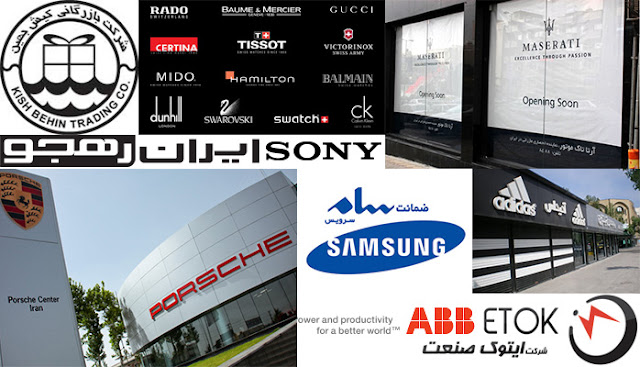
Local or area distributors or traders
Unlike agents, distributors usually (Middle East distributors or Iranian traders) don’t purchase, they put order and their payments are either on credit or after each sales.In this respect no guarantee, warrantee, and after sales service is required from exporter. Distributor`s value mostly meet traditional or provincial markets` need (lower price, moderate or low quality, top famous or unknown brands are more profitable) such as Tehran's Grand Bazaar or markets located far from provincial capitals. These distributors are known for trading both general range of products or specific categories of products.
| Pros | Cons |
- Fastest way to capture considerable share of Iran market, despite no after sales service it works as a showcase to attract potential agents and to prepare the market for large-scale entry
- High profit-margin products usually have higher sale rates thorough distributors than agents
- No currency exchange risk
|
- Payment are mostly made after sales or by long term payments
- Incessant sale or its continuity is on high risk; distributors have dominantly upper hand in negotiations
- Substitutions are always in the que to get your share or position in case they promise a more beneficial future for distributor
|
3-PARTNERSHIP
Partnership with an Iranian company is categorized mainly in two forms "outsourced or customized overseas factory-less production framework" or "direct investment".
Outsourced/Customized production
Since sanctions began to squeeze Iran market, many producers turned to leverage their involvement in fixed-investment and in-house production risks, by outsourced or customized production via overseas suppliers (mostly Chinese, Russian, and some East European). The epidemic low-quality product syndrome in these years, underscores the desperate needs for market development by high quality and desirable products.
Co-branding or other sorts of alliance is to be reached on a mutually beneficial decision. Despite higher rate of engagement for parties than direct or indirect export, the way for long term export to Iran Market would be more squarely paved.
| Pros | Cons |
- Competitive advantage of an available market research by local experts.
- Access to business resources already made by the local partner.
- Partnership with top-notch overseas companies alongside existing reputation of local companies attracts market quickly.
- Familiarity and experience of local business owners to factory-less production.
|
- Misunderstanding, reaching a detailed agreement, disparate or colliding interests, and etc. challenge cooperation, notably the initiation part.
- Delayed orders due to Iran market fluctuation, could be risky especially for seasonal and fashion market.
|
Assembling and CKD
CKD (complete knock-down) and SKD (semi knock-down) are common practices to avoid or at least reduce import tax and tariff or to obtain tax preferences. In fact, local job providing or to be allowed as bidder in national tenders, given that CKD or SKD, is in high attractiveness to Iranian businesses and government. Iran "Free Trade Zones" and "Iran Special Economic Zones", are missioned particularly to provide legal or financial facilities for CKD or SKD in Iran, for instance 1200 containers of home appliances had been imported by CKD in 2013.
| Pros | Cons |
- Reduction or preferences in import tax
- About 34 special economic zones and 7 free trade zones are equipped to provide CKD or SKD Production in a more conventional circumstances distributed across the country and covering major part of the market
- Modest labor and energy costs and thus competitive final prices for market entry
- CKDs specific governmental bids
- Access to the emerging market in Iran neighbour countries
|
- Possible quality control deficiency and thus final quality drop-off
- Customs duty fluctuations in line with governmental production oriented policies
- Possible failure in meeting the criteria for considering CKD as domestic production
|
Partial or full production
A well-known domestic brand, accompanied with widespread distribution channel, could embrace new technologies or products in its spare or vacant production (supply) capacity. A customized strategy could be tailored by means of partial investment in the form of technology, machineries or licensing as complementary to existing domestic businesses.
As a consequence of sanctions, a considerable share of the manufacturing sites and production capacity, estimated to be 30-50%, have been left vacant. Having the situation changed, foreign investments are highly welcome not only to work on full capacity but also to have a fresh start with different collaboration frameworks. This is in line with the recent policy trend aimed at reducing import by increasing domestic production. Given that Petroleum is the main industry of Iran, related investments are highly regarded and recent calls from the government self-evidently demonstrate the trend.
| Pros | Cons |
- Competitive advantage of available market research on customer needs and wants
- well established distribution channels with experienced curve
- Governmental support in the form of purchase, and tenders
- Reduction or preferences in import tax as a domestic producer or service provider
- Access to the emerging market in Iran neighbour countries through Iranian trade lines
- Modest labor and energy costs and thus competitive final prices for market entry
- Low investment risk and thus no barriers to market exit
|
- Misunderstanding, reaching a detailed agreement, disparate or colliding interests, and etc. challenge cooperation, notably the initiation part
- The process of legalizing the cooperation are sometimes challenging and time consuming
|
Despite main strategies for Iran market entry has been discussed as well as their advantages and disadvantages which matters most, scoring each strategy or presenting the best to creative superior value is left unchecked.
This needs pre and post market entry analysis steps according to exporter capability, corporate (business) strategy and market goals which is mentioned at beginning of this article. Therefore it results in different strategies ,varied for each company.


